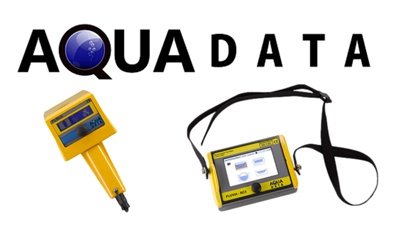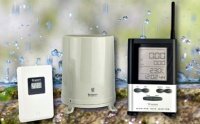What’s New At Instrument Choice: Aqua Data Hydrology And Environmental Monitoring Instrumentation

At Instrument Choice, we proudly stock over 150 brands of scientific instruments and laboratory equipment. Our mission is to provide our customers with the widest selection of scientific instruments, all in one place, so you can measure anything and measure everything.
To help you find the best products to suit your application, Instrument Choice Scientists regularly spotlight new brands so you can better know what they offer you. This edition features Aqua Data, an expert in the design and manufacture of hydrology and environmental monitoring instrumentation.
About Aqua Data
Aqua Data has invested more than 30 years in designing, manufacturing and delivering quality hydrology and environmental monitoring instrumentation. The company’s mission is to develop the most advanced electromagnetic velocity meters in the world.
How Aqua Data’s Electromagnetic Velocity Meters Work
With a little history and some background physics, you can properly understand how Aqua Data’s Electromagnetic Velocity Meters work.
Brief History
Two notable scientists pioneered the physics necessary for the development of Electromagnetic Velocity Meters.
|
Equation 1 Where: q= charge of object |
Figure 1: Use Equation 1 to determine the forces acting on a charge carrier in a magnetic field.
Michael Faraday: Aqua Data’s meters capture velocity measurements utilising electromagnetic induction, a principle discovered in 1831 by Michael Faraday. He found that when he moved a permanent magnet in the space within a coil of wire, it was possible to detect an electromotive force (voltage) across the wire. His breakthrough highlighted the relationship between electric and magnetic fields.
Hendrik Antoon Lorentz: In 1895, this Dutch physicist derived a formula for the forces acting on a charge carrier placed in a magnetic field. (Figure 1 sets out his formula). Lorentz concluded that the force acting on the charge is determined by the:
- Value of the charge (q)
- The strength of the magnetic field (B); and
- The speed (v) at which the charge is travelling.
Water’s Electrical Properties
|
Scientists’ Tip: To understand how Aqua Data’s probes work remember; water contains charge carriers. |

Image 1: The magnetic field lines of an Aqua Data probe.
Aqua Data’s probes exploit the principle noted in our Scientists’ Tip (above). All probes contain a coil that creates a fixed strength magnetic field. This magnetic field influences the charge in the water, and a force, which is dependent on the water velocity (as shown in equation 1) acts upon them. This force pushes the positive and negative charges in the water apart and creates an electric field.
Measuring Electric Field Strength
|
Equation 2 Where: E = electric field strength |
Figure 2: Use Equation 2 to determine electric field strength.

Image 2: The “Right-Hand Rule” is used to determine the direction of the created electric field. |
|

Image 3: Shows how to estimate the electric field direction of Aqua Data probes using the “Right-Hand Rule”.
|
Scientists’ Tip: The magnetic field generated by the coil in Aqua Data probes is (approximately) pointing upwards - as shown in Image 3. Using the Right Hand Rule, we can deduce that the electric field must be pointing in the direction indicated by the green arrow (Image 3). |
Measuring Electric Field Voltage

Image 4 The location of the aligned measuring electrodes.
|
Scientists’ Tip: Aqua Data probes contain two electrodes that you align in the known electric field direction. These electrodes measure voltage caused by the electric field. |
Here’s the equation for measuring voltage caused by an electric field:
|
Equation 3 Where: U = Measured voltage |
Figure 3: The equation to measure voltage caused by an electric field.
and by substituting equations 1 and 2 into equation 3, you will get equation 4, as follows:
|
Equation 4 Where: U = measured voltage |
Figure 4: The formula for measuring voltage
|
Scientists’ Tip: In a nutshell, since both the magnetic field strength and the distance between the electrodes are constant, the water flow velocity can be deduced from the voltage measurement. |
Aqua Data Products

FloStick RC4 WaterVelocity Meter
|

Fluvia RC3 Electromagnetic Velocity Meter
|
Conclusion
Instrument Choice proudly stocks and recommends the advanced professional range of electromagnetic velocity meters made by Aqua Data - the experts in the design and manufacture of hydrology and environmental monitoring instrumentation.
This article provides a historical and theoretical background, along with some representative examples of Electromagnetic Velocity Meters, so you can understand how they work and the quality on offer.
For more information on the Aqua Data products mentioned above, speak with an Instrument Choice Scientist! Call 1300 737 871 or email [email protected].
Appendix 1
The Pros and Cons of Electrodconductive Sensors and Traditional Ultrasonic/Doppler Sensors.
Both electromagnetic and ultrasonic velocity meters provide extremely accurate flow readings for water and wastewater applications. The table below details some pros and cons of each type of sensor.
|
|
Pros |
Cons |
|
Electromagnetic velocity meters |
|
Cannot measure other non-conductive fluids such as oils and steam. |
|
Ultrasonic Meters |
Measure both conductivity and non-conductive fluids |
|
Also interesting
Winter is coming, so we can all start to expect cold fronts, morning frosts, cloud cover and dreary weather - even snow!
Whether you love or dread winter, there is one thing you can do to take the guesswork out of the oncoming weather patterns - a home weather station! Our scientists have compiled a list of the latest, most popular weather stations, all packed with impressive features you won't want to miss

The Instrument Choice Team of Scientists regularly reviews new and popular products, so when searching for the perfect scientific instrument for your application, you can make more informed decisions.
This edition reviews the Oregon Scientific RGR126 Rain Water Gauge, a wireless rain gauge with a separate outdoor temperature sensor.
Find out why this rainwater gauge is a perfect addition for almost any home.


